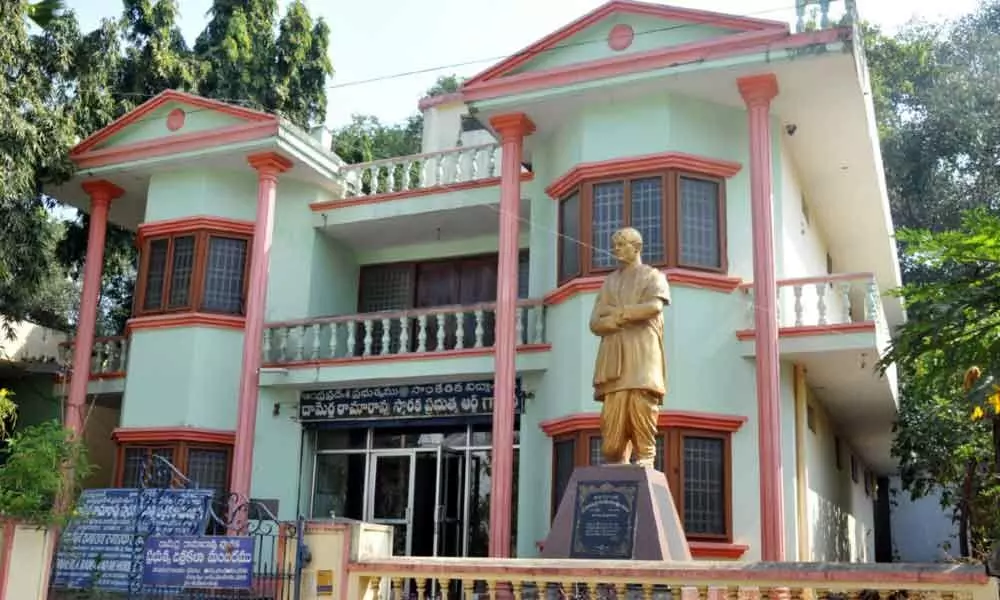Rajamahendravaram: Artist Damerla, a genius par excellence

Damerla Rama Rao, a genius par excellence, is remembered forever for his art work which is equal to that of his predecessor Raja Ravi Varma who lived nearly a century before him.
Rajamahendravaram: Damerla Rama Rao, a genius par excellence, is remembered forever for his art work which is equal to that of his predecessor Raja Ravi Varma who lived nearly a century before him. Though he lived only for 28 years, he produced marvelous collection of oil paintings, water colour paintings and even pencil sketches.
A Damerla Rama Rao Memorial Government Art Gallery has been set up here in his memory which is one among the unforgettable places to visit in the City of Culture. It houses a number of oil paintings, water colour paints and pencil sketches by the renowned artist.
During his short span of life, he produced about 450 paintings. He died at a very young age of 28 years (1897-1925) after he was afflicted with smallpox at a village in Guntur during one of his travels.
Hundreds of people visit the art gallery every day to personally witness the paintings drawn by Rama Rao which are on par with the paintings produced by noted artist Ravi Varma.
Rama Rao left behind a legacy of 34 fully finished oil paintings, 129 water colour paintings, 250 pencil study sketches and 26 sketch books along with a large number of loose sheets. He had also drawn paintings using his wife Sayavani as a model. A quick sketch of Rabindranath Tagore by Rama Rao when he met the poet at Bhavanagar in 1920 with the autograph of Tagore is one among the prized one in the gallery.
Until his last breath, he made a significant contribution for the enrichment of art forms during the period of Revivalism of Indian Art and emerged as an artist in his own right after a century of Ravi Varma, when some artists of Mumbai and Kolkatta claiming supremacy on the strength of styles developed by them. Rama Rao heralded a revolution in the history of Modern Art of India. Rao's scriblings on paper some pictures reflected high potential and he adopted a stage backdrop painter AS Ram as his guru.
Government College principal Sir OJ Couldrey, who was also an artist, tapped the talent of Rama Rao and encouraged him and also spent with him for some days in Ajantja and Ellora caves.
Later, in 1916 Couldrey sent him to JJ School of Arts Mumbai for art education and principal Cecil Berns after observing his talent admitted him directly in the third year of five years course of art.
Later, he returned to Rajamahednravaram in 1920 and married Satyavani who was also an artist. His Rishya Shrunga painting won Viceroy Award in the Expo held by Indian Society of Oriental Art. Viceroy Lord Reading purchased his painting, 'Godavari of Eastern Ghats'.
The golden era of Rama Rao was between 1922 and 1925 when he produced a number of pictures. During 1923-1924, his paintings were exhibited at the British Empire Exhibition, Wembly, and then at Canadian National Exhibition at London.
Government Polytechnic College Principal V Nageswara Rao said that the Central government sanctioned Rs 24 lakh and awaiting for the State government's matching grant of Rs 12.35 lakh allotted for the development of the gallery including preserving of valuable paintings. An additional building is also needed to house the remaining paintings.















